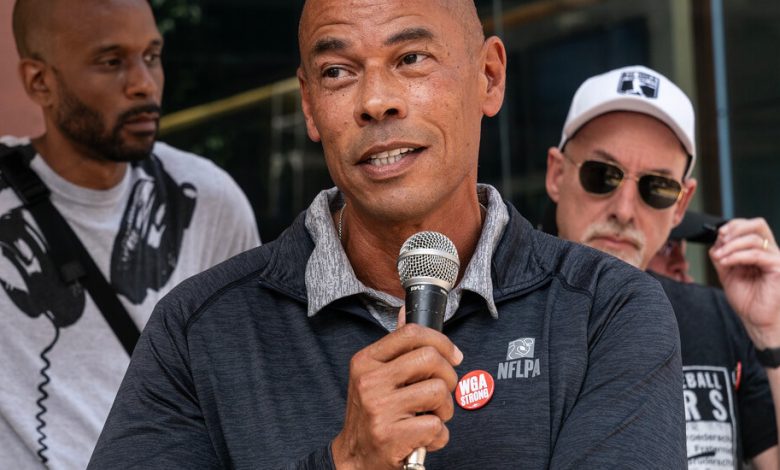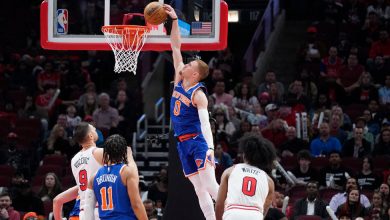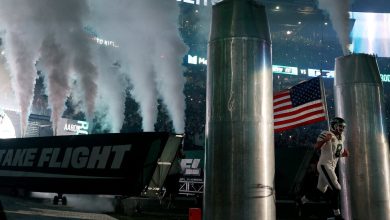Former N.F.L. Players to Retain Disability Benefits

The National Football League Players Association reached an agreement with the league on Thursday to preserve the disability benefits of hundreds of former players three months before those players were set to lose thousands of dollars a month in payments.
The deal, negotiated by the new executive director of the union, Lloyd Howell, will allow players who have been deemed totally and permanently disabled by the Social Security Administration to keep the payments from the league’s plan as well as benefits from the federal government. The players will have to be re-evaluated by March 31, 2026, though, to determine whether they remain eligible for the payments.
Going forward, however, any player deemed disabled by a doctor working for the Social Security Administration will have their N.F.L. benefits reduced by the amount they received from the government.
The league and the N.F.L. Players Association, which jointly administer the retired players’ benefit fund, agreed in the collective bargaining agreement struck in 2020 to reduce players’ disability checks by the amount they received from the Social Security Administration. That reduction was delayed until January 2024 after complaints from retired players and union leaders who regretted approving the move.
If the deductions for Social Security benefits had proceeded as scheduled, about 400 former players with debilitating injuries would have each lost about $3,000 a month in benefits, or about a quarter of their total payments. Players deemed totally and permanently disabled receive up to $265,000 a year, or $22,084 a month, from the league’s plan. Most players, though, receive about half as much, or $11,500 a month. Those approved by doctors for the Social Security plan receive an additional $3,200 from the government. The payments are not adjusted for cost of living.
Mr. Howell was elected executive director in June to replace DeMaurice Smith, who led the union for 14 years. Mr. Howell made preserving the benefits one of his first tasks. The disability program is paid for by the current players’ share of the league’s revenue.
“Fighting for the welfare and benefits of all players is a legacy of this union and this is an important unifying moment,” Mr. Howell said in a statement.
“The N.F.L. was responsive to the NFLPA’s proposal and has agreed to make the necessary change to prevent those specific former players from having a reduction in this benefit,” the league and union said in a joint statement.
The fight over the offset has led to questions about a promise N.F.L. Commissioner Roger Goodell made in 2007. Under fire from players who said there were too many hurdles to gaining disability benefits, Mr. Goodell said that any retired player would automatically be approved for N.F.L. disability benefits if the Social Security Administration determined he was disabled.
“We have more work to do,” Mr. Goodell told a Congressional hearing. “The men who played professional football decades ago deserve our respect and recognition, and their contributions to our game must never be overlooked.”
Since then, the number of players receiving benefits and the amount of those benefits have grown. About $320 million will be paid this year to nearly 3,200 former players who receive some form of disability benefits, according to the union. That’s up from about $20 million in 2006. “We advocate for a fair process to ensure all players are treated equally when they apply,” the union said in a statement in January.
Still, many former players say the process to start receiving those benefits is filled with red tape and difficult hurdles. They accuse the disability benefits plan of scheduling appointments with doctors in distant cities, requiring players to fly or drive long distances, which can be difficult given their injuries.
Former players also say doctors claim that the players can perform work — and thus are ineligible for benefits — even when the jobs require sitting in front of a computer for long hours, something that players with back and neck injuries have trouble doing.
Last year, a U.S. District Court judge chastised the league’s plan for its “rubber stamp” review process. The judge said that the poor oversight by the plan’s board was “part of a larger strategy engineered to ensure that former N.F.L. players suffering from the devastating effects of severe head trauma are not awarded” maximum benefits.
In February, 10 former players sued the disability plan and Mr. Goodell, accusing them of systematically denying benefits to the players by lying about and misinterpreting the results of their medical examinations and the plan’s guidelines. The players claimed that the doctors hired by the plan to evaluate the players were rewarded with more referrals if they denied more claims, all in an effort “to limit the payment of benefits to the very players whom the plan was designed to help.”
In June, the league and the disability plan argued that the case should be thrown out because, among other things, the players had cited statistics out of context and overlooked that the plan had disbursed $1 billion to disabled players since 2016.
In 2020, Aveion Cason, a running back who played for eight seasons, and Don Majkowski, a quarterback for 10 years, sued the N.F.L. and players’ union to stop the planned Social Security offset. The former players, both of whom receive disability benefits, had their suit dismissed because the offset had not yet been put in effect, so damages could not be established.
As a quarterback, Mr. Majkowski he made more money than most players during his 10 seasons. But he has had 25 surgeries on his shoulders, hips, ankles, back and neck, requiring long recovery times. About a decade ago, the N.F.L. plan denied his application, but he was eventually approved by the Social Security plan, allowing him to begin collecting benefits.
His wife, Kelly, works part time, but she would have had to look for more work if the offset was carried out. Now, she can continue to take care of her husband full-time.
“This is going to save a lot of families long hardship in the future,” Mr. Majkowski said. But “you hear it in the news and from other families, that the evaluation system hasn’t been fair. There needs to be neutral doctors and a system that will evaluate every player with the same parameters.”




